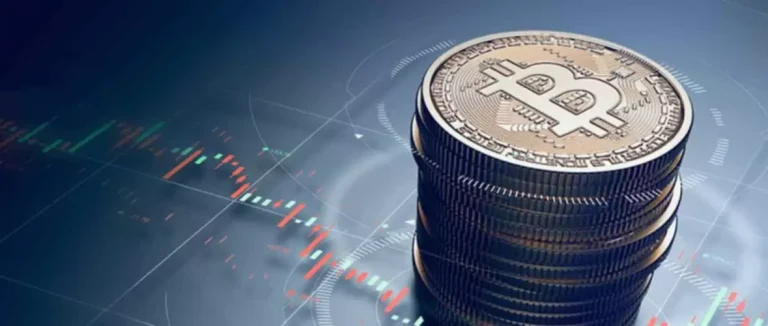Content
These liquidity pools create areas of interest for institutional traders, often leading to reversals or significant price movements when the market reaches these levels. In the ever-evolving world of financial markets, mastering ICT Liquidity Pool dynamics is crucial for any trader aiming to succeed. An ICT Liquidity Pool refers to specific areas on what is sell side liquidity a price chart where liquidity—either buy-side or sell-side—is concentrated.
How to Identify Buyside Liquidity (BSL)
As in the picture above you can see there were established lows and the sell stops were resting below the lows, price after clearing the lows and sell side https://www.xcritical.com/ liquidity moved into the buy side. When traders initiate buy orders, they often seek to safeguard their positions by placing corresponding sell orders to mitigate potential losses. The theoretical underpinnings of liquidity take on practical significance in the context of private equity transactions. For instance, let’s consider a scenario where you’re looking to acquire a company with a low current ratio.
Market Mechanics – Understanding How Prices Move in The Markets
- Liquidity in ICT is multifaceted, involving both buy-side and sell-side aspects.
- Tamta’s writing is both professional and relatable, ensuring her readers gain valuable insight and knowledge.
- For private equity firms, this understanding is indispensable, forming the foundation upon which the best buy-side and sell-side decisions are built.
- But there is definitely no buy-side liquidity above current prices, and there is no sell-side liquidity below current prices.
- For example, in a rising market, a liquidity pool might form above a previous high, where large sell orders are placed.
- For many traders, you can click by their name to see the trades along with the SIM/Live designation.
The core content aims to fill in the gaps left in ICT’s free tutorials and provides a procedural way of using all the information gathered throughout the mentorship program [3]. It is designed to help traders become proficient in ICT concepts and apply them effectively in their trading activities [3]. Forex liquidity is primarily driven by major financial entities, such as central banks and investing companies, accounting for over 90% of the daily trading volume in the market. Upside purchase constraints use higher-level expansion in time frames, with downside profit objectives pointing to the proximity of underlying support. Integrating structure given through supply and demand areas, either buying with, against, or in the absence of the prevailing sentiment, improves trade construction. The buy side caters mainly to significant institutional investors, including pension funds, endowments, hedge funds and high-net-worth individuals.
ICT Basic Scalping Concepts: Beginner’s Guide to High-Probability Trades

So at any time, there’s a price we pay if we want to sell right now and a different price we’ll pay if we want to buy right now. Some people say the price moves up because there are more buyers than sellers, but this isn’t possible. A trade only occurs when both are present; every trade is a buy and a sell. These include stop losses, retail investors, price changes, and the main roles of buyers and sellers in the market.

Master Liquidity in Forex Trading with 3 Step Guide
These liquidity sweeps are critical indicators of where the market is likely to go next, making them essential for traders to identify. ICT Liquidity Pools serve as indicators of where the market is likely to reverse or continue its trend. For example, in a rising market, a liquidity pool might form above a previous high, where large sell orders are placed. When the price reaches this pool, it might reverse as these sell orders are executed, providing an opportunity for traders to enter short positions. ICT Liquidity Pool Trading involves identifying these liquidity-rich zones and using them to make informed trading decisions. By recognizing where liquidity accumulates, traders can enter and exit trades with greater precision, reducing risk and increasing the likelihood of profitable outcomes.
Identifying the Draw on Liquidity (DOL) is essential for effective ICT Liquidity Pool trading. The DOL can be identified by analyzing key levels such as Previous Week High/Low (PWH/PWL) or session highs and lows from major trading sessions. These levels often attract significant liquidity, providing clues about where the price is likely to move next. HowToTrade.com helps traders of all levels learn how to trade the financial markets.
When trading reversals, traders should look for price actions that confirm a potential reversal around buy side or sell side liquidity levels. These confirmations can come as engulfing candles, pin bars, or other key market patterns. Sellside Liquidity (SSL) refers to the price levels where a large amount of pending sell orders are placed.
Buy-side players in the public market include money managers at hedge funds, institutional firms, mutual funds, and pension funds. In the private market, private equity funds, VC funds, and venture arms of corporations investing in startups are on the buy-side. On the sell-side of the equation are the market makers who are the driving force of the financial market. For example, any individual or firm that purchases stock to sell it later at a profit is from the buy-side. We are mainly focusing on the external range liquidity because it lies within the major trend of market while internal range liquidities are taken by the price retracements. Liquidity is an important piece of the puzzle, but so is the result of liquidity consumption.
Liquidity’s role extends beyond balance sheet assessment; it also shapes the strategic direction of buy-side and sell-side decisions. Consider learning about our financial resources to further enhance your understanding. Buy-side liquidity thus acts as a strategic tool to exploit market opportunities and enhance trading outcomes. Financial review boards oversee and regulate market liquidity, ensuring a fair marketplace for everyone involved. Excessive money can increase prices as demand rises, leading to inflation and economic bubbles. Central banks, like India’s RBI, use various methods to ensure sufficient money availability, particularly during times of crisis.

Sell side liquidity as defined by the Inner Circle Trader (ICT), refers to the accumulation of pending sell orders, particularly sell stop orders. Buy Side Liquidity according to the inner circle trader (ICT) is the volume of pending buy orders (Buy Stops). Finally, regulatory requirements can impose specific constraints or requirements, impacting a company’s flexibility to manage its liquidity. Imagine for a minute that the market is a hi-rise building – but one without stairs. Price can move up when the ceiling above it is broken, and it can move down when the floor below is broken.
In the image below, a Gap Factor of .25 was used to achieve greater granularity and discover smaller Fair Value Gaps that exist on the chart. A common practice amongst users is to utilize the horizontal line drawing tool and set alerts at important Fair Value Gap levels. Often, a displacement will occur just after a liquidity level has been breached and will often result in the creation of both a Fair Value Gap and a Market Structure Shift. When implementing the Liquidity Sweep Strategy in an uptrend, it’s advisable to place the stop loss below the order block.
You can download below ICT internal and external range liquidity in PDF for free. As the ICT internal and external range liquidities are identified inside and outside of a price range which is called dealing range, So you must have the basic understanding of ICT dealing range. As by the discussion above you have understood the meaning and types of liquidity in forex trading and you also got to know that market makers look to hunt the liquidity. On the flip side, if you’re looking to sell a portfolio company with a robust cash ratio and strong cash flow generation, potential buyers may perceive the company as financially resilient.
Your actual trading may result in losses as no trading system is guaranteed. You accept full responsibilities for your actions, trades, profit or loss, and agree to hold The Forex Geek and any authorized distributors of this information harmless in any and all ways. Self-confessed Forex Geek spending my days researching and testing everything forex related. I have many years of experience in the forex industry having reviewed thousands of forex robots, brokers, strategies, courses and more. I share my knowledge with you for free to help you learn more about the crazy world of forex trading!
Moreover, it tries to help prevent extreme price fluctuations, promotes market stability, and enhances overall trader confidence. Effective trade management in ICT Liquidity Pool trading involves monitoring the market for signs of reversal or significant resistance after entering a trade. Traders should adjust their stop loss to protect profits as the trade moves in their favor and be prepared to exit the trade if market conditions change. Additionally, traders should use tools like Order Blocks and Fair Value Gaps to identify key entry and exit points. Traders can use Order Blocks and Fair Value Gaps to identify key entry points, aligning their trades with institutional order flow. By entering trades at these points, traders can increase their chances of success and capture significant price movements.
